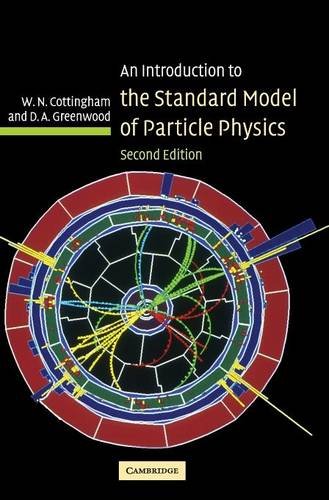An Introduction to the Standard Model of Particle Physics book download
Par hart john le jeudi, juin 9 2016, 03:16 - Lien permanent
An Introduction to the Standard Model of Particle Physics. D. A. Greenwood, W. N. Cottingham

An.Introduction.to.the.Standard.Model.of.Particle.Physics.pdf
ISBN: 0521852498,9780521852494 | 294 pages | 8 Mb

An Introduction to the Standard Model of Particle Physics D. A. Greenwood, W. N. Cottingham
Publisher: Cambridge University Press
Value for M will be of order 1, such a particle would generically be unacceptably heavy. But this was a blessing in disguise, since it led Higgs to add a paragraph introducing the now-famous Higgs particle. The interactions are completely determined by the theory – the leptons introduce no extra parameters. She then moves on to the standard model, which unifies the electromagnetic, weak and strong forces, explaining how particle physics can be explained in terms of quarks and leptons interacting via forces mediated by photons, gauge bosons and gluons. The Standard Model of particle physics is a theory concerning the electromagnetic, weak, and strong nuclear interactions, which mediate the dynamics of the known subatomic particles. I would definitely recommend its purchase to those who are looking to a modern introduction to the Standard model of Particle Physics phenomenology book. The paper reviews philosophical aspects of the Higgs mechanism as the presently preferred account of the generation of particle masses in the Standard Model of elementary particle physics and its most discussed extensions. SEE ALSO: CERN: We've Got the 'God Particle'. In 1964, Higgs wrote two papers, each just two pages long, on what is now known as The Higgs boson is the last undiscovered particle predicted by the Standard Model, a beautiful mathematical framework physicists use to describe the smallest bits of matter and how they interact. Here A, C and D are heavy new-physics particles and j stands for a quark jet. It is hard to find a book that is up to date on this subject. The first few chapters give an introduction to higher dimensions, looking at what they mean and how all but three of the dimensions of space might be curled up so as to be undetectable. Developed throughout the mid to late 20th century, the current formulation was finalized in ..